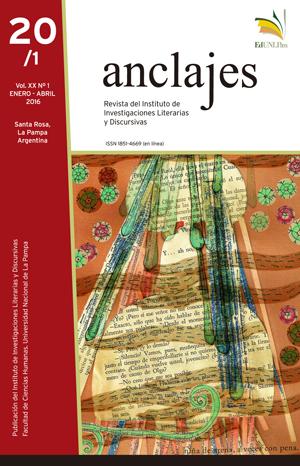The nuances of displacement: foreignness and cosmopolitanism in Eduardo Muslip’s Phoenix
Keywords:
Eduardo Muslip, Argentine Literature, literary criticism, 21st century, nouvellesAbstract
The point of view assumed by the narrator of the nouvelles comprising Eduardo Muslip’s Phoenix (2009) assumes variations that collectively could be called a “foreign vision.” Reading the narrator’s positioning in the context of the stranger, as understood by Georg Simmel, demonstrates features of storytelling affected by displacements and distances by familiarizing the distant and estranging the familiar. Understanding the vision of the narrator as a self-reflexive and attentive reveals features of the narrative subject as they relate to contemporary reconsiderations about the new scope of cosmopolitanism. Instead of a depoliticized and uncritical representation of international mobility and spaces of transit in the contemporary world, Muslip gives the various modes of displacement a social and political contextualization.Downloads
Downloads
Published
Issue
Section
License

This work is licensed under a Creative Commons Attribution-NonCommercial-ShareAlike 4.0 International License.
The authors must adhere to the Creative Commons license called "Attribution - Non-Commercial - Share Alike CC BY-NC-SA", through which it is allowed to copy, reproduce, distribute, publicly communicate the work and generate derivative works, provided and when the original author is cited and acknowledged. However, it is not allowed to use the work or its possible derivative works for commercial purposes. The authors may establish additional agreements for the non-exclusive distribution of the version of the work published in the journal (for example, place it in an institutional repository or publish it in a book), with the acknowledgment of having been first published in this journal.
The publication of contents in this journal does not imply any royalty or charge for the contributors.








.png)

2.png)















_(2).png)






.jpg)
_(1)1.jpg)



.jpg)



